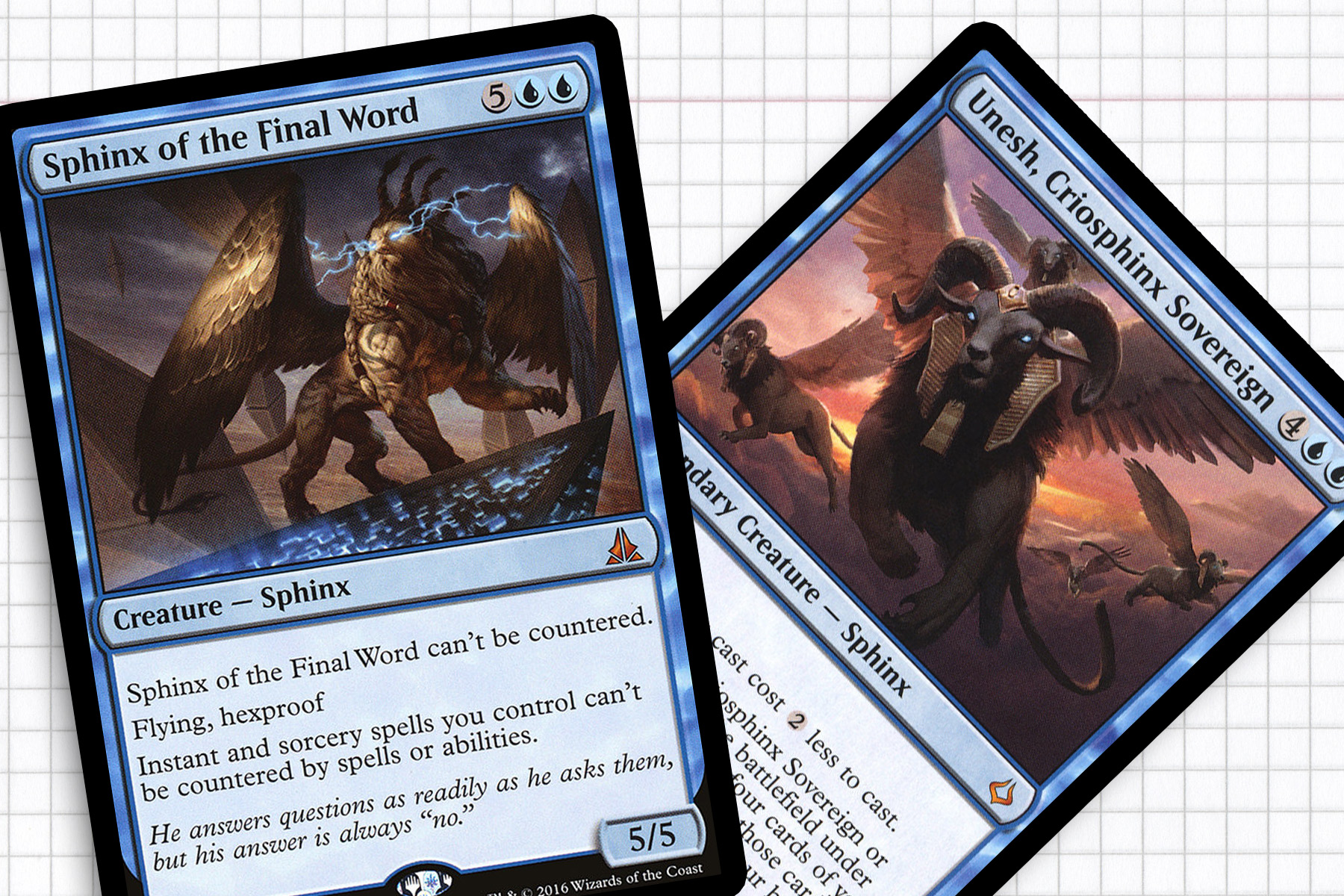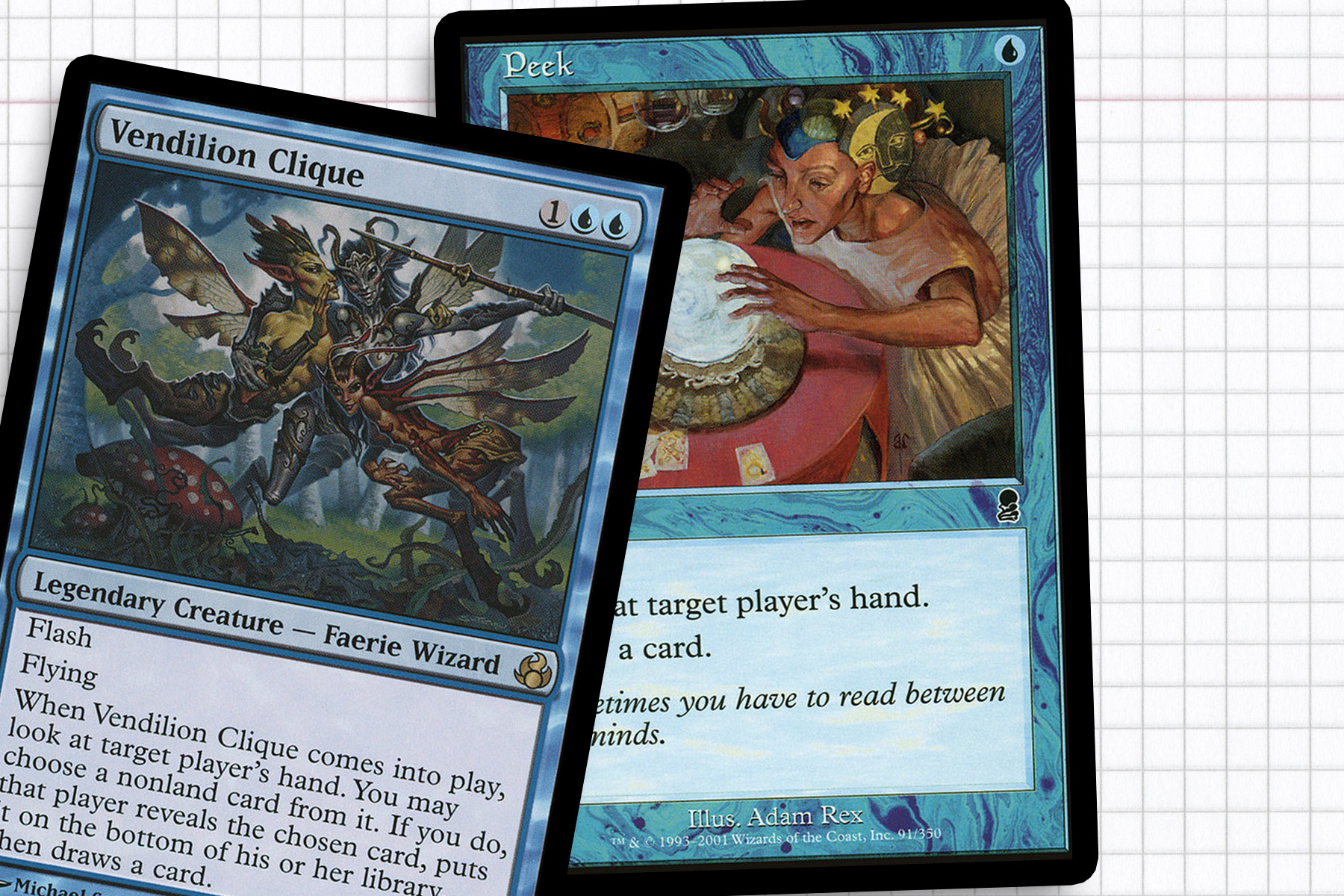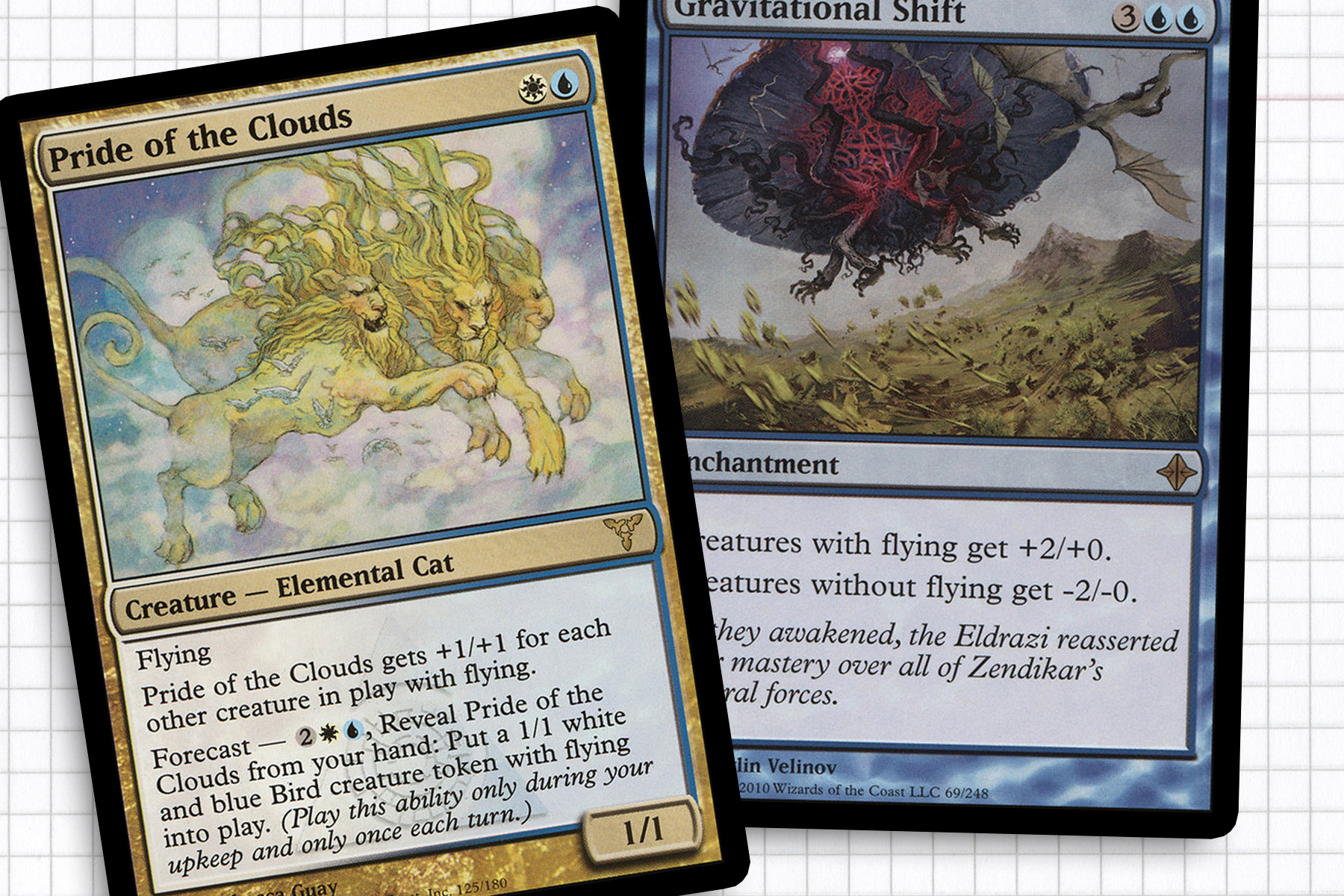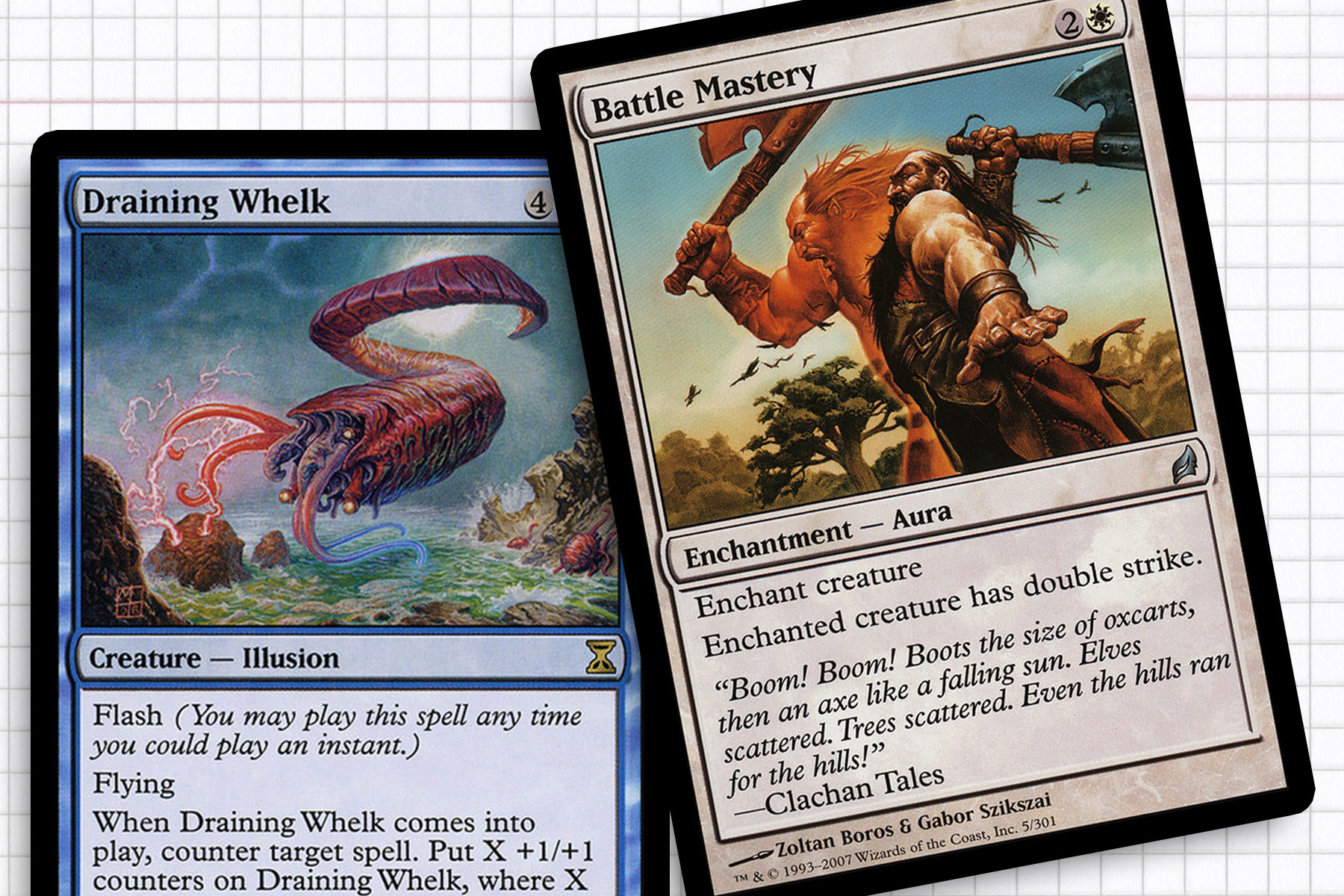
Understanding Sphinx
Sphinxes are an interesting mythical creatures. Much like dragons, they show up in different forms throughout quite a few different cultures that are geographically separate. While the finer details of their lore might not be as well known to the general public, I believe most people would know one if they saw a picture, though chimeras might trip many up. Over the history of Magic, Wizards has been trying to nail down iconic creature types for every color; white, black and red were easy with Angels, Demons, and Dragons respectively, but it took a little longer for them to land on blue’s iconic creature type.
Starting in 2002 left me with a bad sense of how Wizards envisioned their creatures. We were currently visiting Otaria—one of a few places on Dominaria we didn’t see during our current visit—and Odyssey block thought it was worthwhile to feature different creature types than normal. Demons were not in vogue due to worrisome parents ruining 90’s pop culture for their kids—Buffy the Vampire Slayer was working to correct that—and at the time Wizards was trying illusions and leviathans as blue’s iconic creatures.
All of this went over my head until Zendikar when it became clear that where appropriate, sphinxes would be the iconic creature type representative of blue. We finally got a tribal legend in Hour of Devastation with Unesh, Criosphinx Sovereign and some additional support with Azor, the Lawbringer to highlight the tribe for Standard, which put it on my short list to investigate for a Commander deck. Isperia the Inscrutable makes a lot of sense for this deck, as she allows us to fill in our deck’s shortcomings with other flying creatures, while also requiring us to invoke some of the cryptic flavor of the sphinx.
As I have alluded to already, this deck is going to use control elements to gain knowledge of opponents’ hands, while also using flying creatures to gain a combat advantage over the rest of the table. Hopefully, the pieces will amount to more than the sum of all the parts and be a fun deck that forces us to pay special attention to the game.

Seeing Hidden Information
I like the guessing ability on Isperia. With the first activation you are taking an educated guess, but on future triggers you have some information to work with, like Cabal Therapy. One of the simplest ways to get around guessing at all it use cards like Peek, Spy Network, or Urza’s Glasses to look at people’s hands. In a pinch we can use unconventional means like Rousing of Souls or Zur’s Weirding. Since we’re using this information to fuel a tutor strategy and not a hand-disruption strategy, I am not left with a sour feeling in my stomach thinking about un-fun gameplay and subpar interaction with the table.
An additional benefit to playing spells that cause players to all see each others’ hands is that it can take some of the pressure off of you, because people see threats for exactly what they are and bluffing is taken out of the equation. It is possible that people will go out of their way to remove any of our creatures or enchantments enabling this, because it does take up a lot of real estate on the physical table everyone is playing on, but that’s what floors are for. The reality of this deck is that without being vigilant about writing down the contents of our opponents’ hands when we see them with Vendilion Clique or bounce something back to their hand with Into the Roil or Remand, keeping track of hands is going to be a bit of mental gymnastics. The best shortcut may even be to staple a bounce or peek effect onto your nearest Isochron Scepter or have Telepathy always on hand.

Flying You Fools
The nice thing about Isperia is that she will not require you to adhere only to Sphinx creatures, instead allowing us to look for anything from Emeria Angel to Warden of Evos Isle. Flying is a very valuable evasion ability that can often be the difference in the outcome of games, because people don’t tend to go big on the theme, aside from when we come face-to-face with the angel tribal deck. Serra Aviary, Gravitational Shift, or Favorable Winds give us a potent combat advantage that most other players won’t get.
Of the 37 choices available to us—not including changelings, of which only Mirror Entity and Avian Changeling might make my list—I am most excited by Alhammarret, High Arbiter, Chancellor of the Spires, Medomai the Ageless, and Windreader Sphinx as some of the first suite of cards I will be searching out with Isperia. But I have already admitted that going completely sphinx tribal will likely not be enough. While your experience may vary and there is any number of ways to create tokens with flying, I would aim to mostly make bird tokens our secondary creature type for the deck.
By using cards like Migratory Route or Pride of the Clouds, we can create smaller blockers that interact well with populate spells like Scion of Vitu-Ghazi or can be upgraded late game with Hour of Need. The theme continues on as we utilize Soulcatcher as an impartial creature who will increase in power regardless of which of our creatures is dying; and Windbrisk Raptor, who will make our already beefy creatures into sources of life gain. But I really want to consolidate our creature types so we can benefit off Shared Triumph, Adaptive Automaton, or Obelisk of Urd set to bird, or reset with something like Venser, the Sojourner if our Plan A falls apart.

Keeping Control
A sizable army will not help us fend off a combo, unless by chance it can be prevented with a well-timed Unified Will. Experience has taught me that in Commander, sometimes all you really need is one or two counterspells to win a game. Luckily for us, our general will be able to tutor Draining Whelk and Silumgar Sorcerer to act as countermagic for us. And yes, I know the best countermagic is the stuff your opponents don’t know about.
Being a realist, I admit that trying to use our general to tutor out creatures like Admonition Angel and Angel of Serenity can be tempting, as they allow us to get rid of troublesome creatures for a time. But I also know that it’s hard to deny the power of classically powerful cards like Detention Sphere or Ghostly Prison to keep us safe. Since we’re looking to win through the combat step, I recommend Bident of Thassa or Coastal Piracy to keep our hand full and our land drops consistent. Because we’re tribal, we can consider Kindred Discovery for the same reason or Kindred Boon to keep all our expensive sphinxes safe from Wrath of God. And possibly my favorite include into a tribal deck really doesn’t see a lot of play but really should is Harsh Mercy, which often catches people off guard due to its cheaper mana cost. The spell is obviously for a more niche deck, but we are already prepared to have our Azorius Skies deck be pretty niche.
The last control element we can leverage to our benefit is Time Warp effects. By being able to take multiple attacks in a turn cycle, we can tutor up our fliers and even deploy them. This is where Medomai the Ageless comes in handy as a repeatable effect that buys us extra turns. We can also mimic extra turns by doubling our mana with Sword of Feast and Famine, allowing us to get out threats on both of our main phases, or simply doubling our tutor output by granting Isperia double strike with Battle Mastery or Fireshrieker.
I don’t know that there are many generals that really hit a sweet spot like Isperia; being able to be built in a very linear fashion, while also being open-ended enough to allow for at least a handful of notable variations. This is the kind of deck that in a few years will probably be able to build completely around the tribal theme if we get more sphinx cards or open-ended “lords” like Adaptive Automaton or Metallic Mimic. At the same time, as long as Wizards continues to print spells that allow players to see the cards in a player’s hand or the top card of their library, this deck will also just become more and more viable as a control strategy with an end game aimed at winning through damage in the sky.
Overall, this was an interesting design space that I honestly had not put much thought into during my Commander career, probably because there is always another l player at the table keeping everyone honest. It really is one of my Commander blind spots, which is probably an entire article in itself. Until next time, find me on Twitter and let me know what huge suites of cards I completely overlooked. Thanks all.

